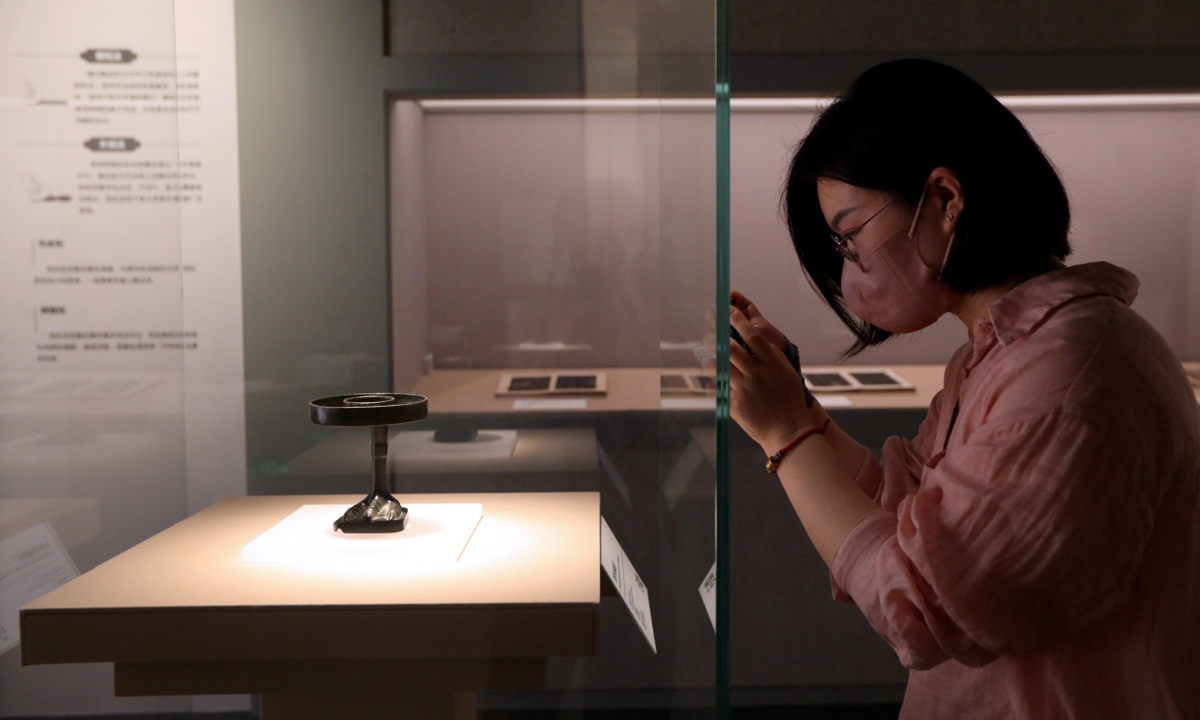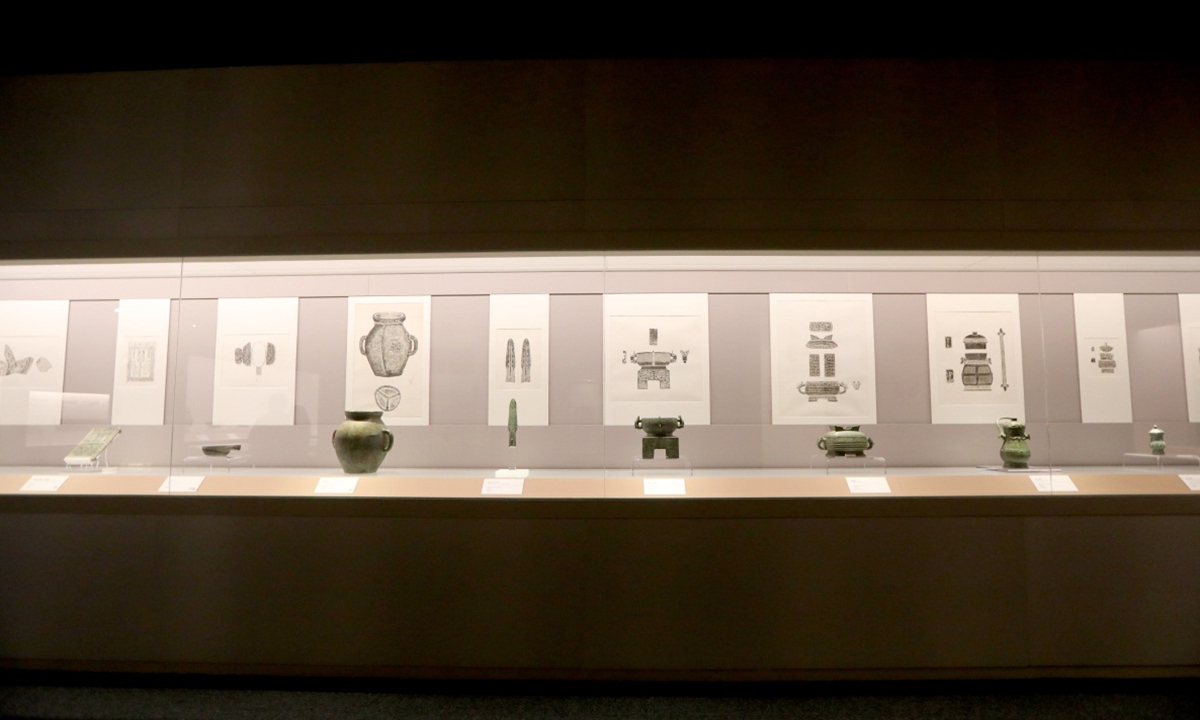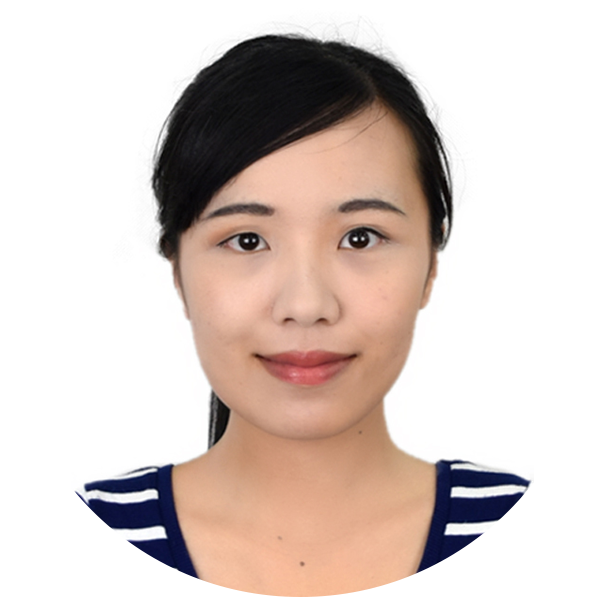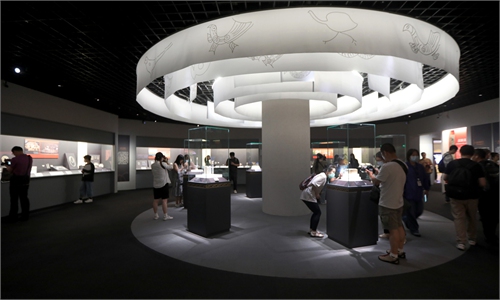ARTS / ART
Exhibition on time-honored rubbing technique to open in Shanghai, showing wisdom of Chinese civilization

A visitor takes a photo of the Goose Foot Lamp Made in the First Year of the Jingning Era. (Photo: Chen Xia/GT)
A bronze ding (a food vessel) is placed under soft light. Beside it is a paper-and-ink rubbing of the ding, clearing showing the characters and patterns on the surface of the vessel that were carved thousands of years ago.
A new exhibition, called Advancing with the Times: The Technique of Rubbing, is scheduled to open to the public on Friday at Shanghai Museum. It will show visitors China’s time-honored rubbing techniques with well-preserved ancient bronze and stone artifacts as well as their corresponding rubbings.
As a vital documentary medium in Chinese history, bronze and stone artifacts started to record important information before the Qin Dynasty (221BC–206BC). In order to preserve and spread the information on these artifacts, ancient Chinese developed rubbing, a simple yet productive technique for duplicating the information, Chu Xiaobo, director of Shanghai Museum, said at the exhibition’s press release on Thursday.
“The rubbing technique is a vivid manifestation of the ancient wisdom of Chinese civilization,” Chu noted.
To fully demonstrate the charm of this traditional Chinese technique, the exhibition displays 37 sets of precious cultural relics, including bronze and stone artifacts and rubbing works from different periods. Visitors can also see some of the main rubbing tools and watch videos that show the rubbing process, Chu said.
One of the exhibition’s highlights is a rubbing of the 3,000-year-old Rectangular Ding with the Inscription “Si Mu Wu,” the largest and heaviest bronze ware item ever unearthed in China.
“The rubbings on display were probably among the first batch of [modern] rubbings in the 1940s, after the ding was unearthed in 1939,” the exhibition’s curator Li Kongrong, who is also an inheritor of the rubbing technique, told the Global Times at the exhibition’s preview on Thursday.
The rubbing technique was widely used in ancient China for reproducing texts and patterns with considerable efficiency. With continuous development of the technique, in the Qing Dynasty (1644-1911) the rubbings started to serve not only as a medium for reproducing information, but also became works of art themselves, Li said.

Some bronze and stone artifacts and their corresponding rubbings displayed at the exhibition. (Photo: Chen Xia/GT)
The painting Scraping the Patina off the Lamp, for instance, was created by Qing Dynasty painter Chen Geng based on a work by rubbing master Liuzhou. Liuzhou made two rubbings of a 2,000-year-old bronze lamp named Goose Foot Lamp Made in the First Year of the Jingning Era, and Chen subtly drew two men sitting or standing on the rubbing images of the lamp, creatively combining the technique of rubbing and the art of painting.
The rubbing technique probably emerged around the Han Dynasty (206BC–220AD) or Three Kingdoms (220–280AD), following the invention of paper and ink, according to Li.
Even now, rubbing is still widely used in fields including archeology and museology, said Wang Yue, deputy director of Shanghai Museum’s bronze department.
“Today, even though photography and scanning are commonly used for recording information on bronze and stone artifacts, the traditional rubbing technique has its own advantages in copying the artifacts and clearly presenting the information on them,” Wang told the Global Times.
The exhibition is set to run until October 8, and offers bilingual introductions for international visitors.


